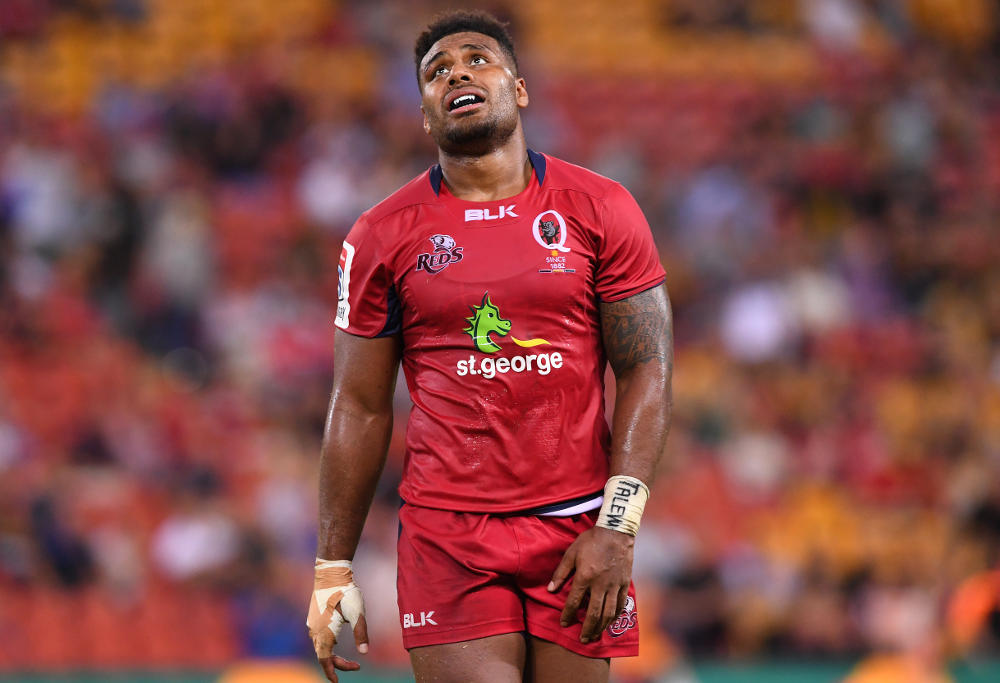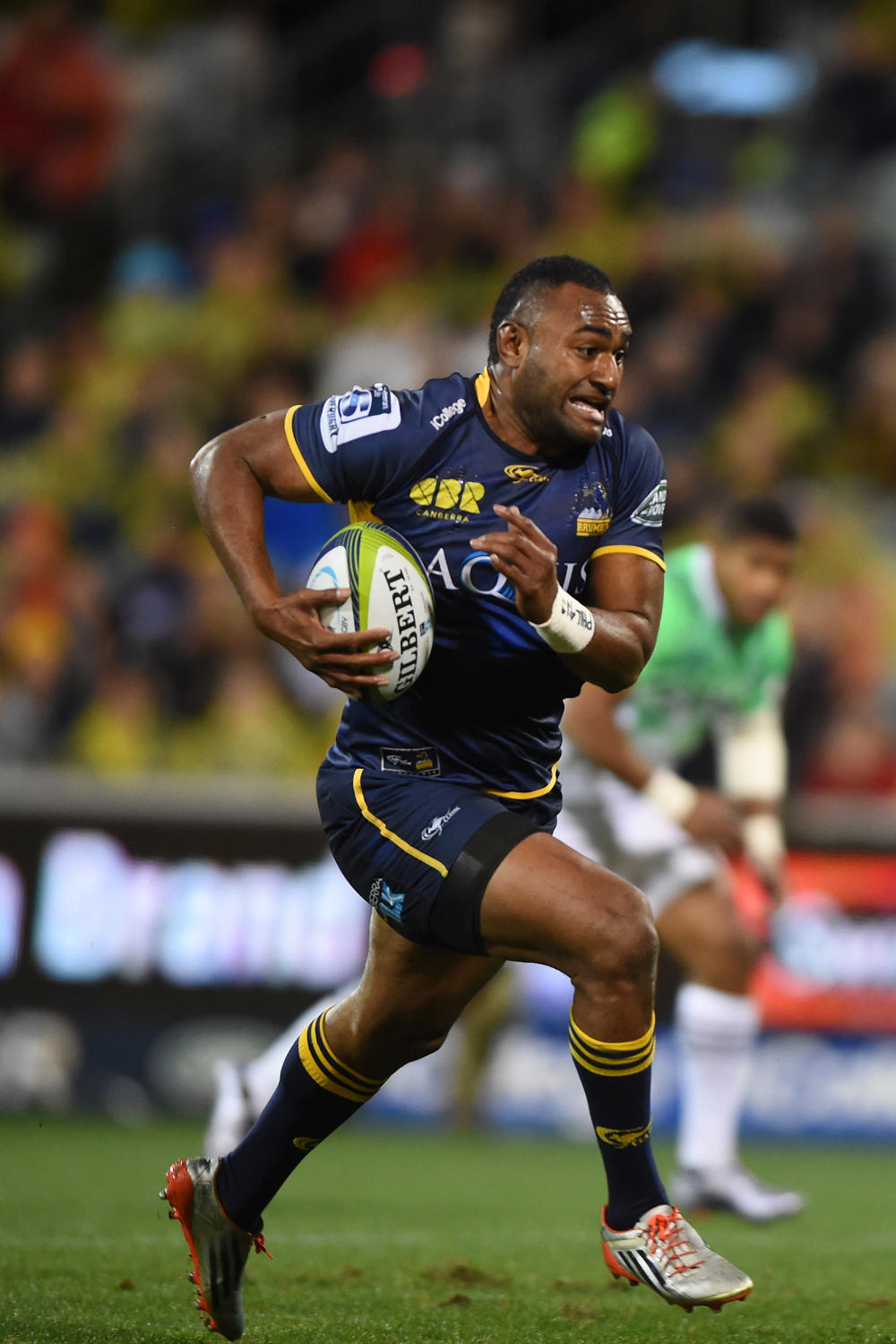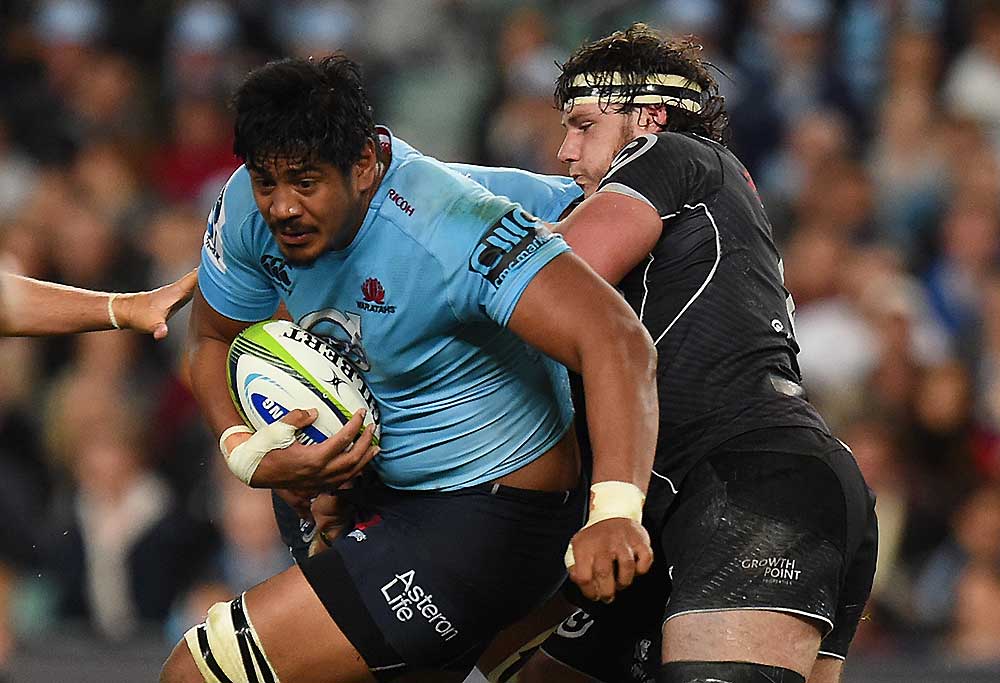Like prisoners on death row served their last meal, the Western Force and the Southern Kings yesterday feasted ravenously, all the while trying to pretend it was just a normal day.
By the time they hit the showers SANZAAR had read them their last rights; although in the case of the Force, their final fate still awaits them, on the slim chance that they can make a case for the Rebels or Brumbies to take their spot on the gallows.
How did it all come to this? That two rugby sides are somehow expected to put on a show, in the knowledge that an announcement about their future existence will follow immediately after? Fans expected to pay their money and cheer their team before being told, in the car on the way home, not to bother coming back?
In one weekend, Round 7 displayed all that is so great and all that is so dire about Super Rugby – a contrast so profound it’s almost beggars belief.
On the side of great are the players. And the rugby; not all of it to be sure, but way more than what the knockers would have us believe.
Take the Sunwolves. Derided by many as uncompetitive, too far away, care factor zero. Try telling that to the fans who were in tears over their one point victory over the Bulls, and Roar live blogger Connor Bennett who got ‘goose bumps’ over the thrilling finale and fantastic reaction from the crowd, players and coaches.
Take the superb Highlanders versus Blues match, where the Blues showed they have finally graduated to the status of competing in and providing a high quality New Zealand derby, but aren’t yet quite good enough yet to win one.
As an added bonus we got the extra irony of reverend Sonny-Bill Williams making a stand about a sponsor whose business is making money.
It got better. As if a lightbulb had finally gone off in Steve Larkham’s head, the Brumbies were given licence to play rugby against the Reds and, wouldn’t you know it, a 43-10 thrashing resulted.

This column has been begging for weeks for fullback Aiden Toua to run the ball, and Fox Sports commentator Rod Kafer duly informed viewers that Toua had indeed been told this week to express himself more. Guess what? By the end of the game his confidence was so high he was roaming free with the ball in one hand, with a smile on his face as wide as the pitch.
The big takeaway from this match wasn’t the score, or the hole that the Reds have dug themselves into, but seeing Australian players beaming afterwards with the realisation that they can actually move the ball into space and run with intent, just like the Lions and the best New Zealand sides. If they just allow themselves the self-belief to actually have a crack.
And so it went on, the Stormers overcoming the Chiefs in front of almost 35,000 fans at Newlands in a seven-try extravaganza which featured two moments of the best rugby magic one could ever wish to see. First was Damien McKenzie, hemmed into his own corner, sparking an amazing 95m counter-attack try to Toni Pulu. And then Dillyn Leyds, with a moment that he will dine out on for the rest of his life, hitting a flying SP Marais on the chest with a reverse pass while sitting on the ground, to set up what was eventually a match-winning lead.
Want more? Kings flyhalf Lionel Cronje and fullback Malcolm Jaer pulling off a double-act try yesterday, so audacious not even Carlos Spencer would have attempted it.
If only Super Rugby was left to these players. Despite all of the off-field concerns, there are great footballers, week after week, doing great things. Yet they, and the fans, have been sorely let down by the game’s administrators.
SANZAAR, a vehicle designed to help its four member unions tackle professional rugby from a position of united strength, has seemingly only just now come to the realisation that its best interests collectively are not necessarily aligned with its individual interests.
But making, or being forced into, such a landmark decision while under intense pressure – not as part of a considered long-term strategy – risks solving nothing. It definitely won’t turn a single, technically deficient Australian halfback into Aaron Smith anytime soon.
The questions being asked in recent weeks have mostly centred on, ‘how did SANZAAR allow Super Rugby to grow to 18 teams, thus diluting its quality?’ And as a result, ‘which teams should be culled?’
Surely the pertinent question is, ‘how did the decision about the optimal structure and direction for Super Rugby get shifted out of a controlled, off-season planning process into a very public, panic-filled arena? In the middle of the season?’ And if I’m allowed a supplementary, ‘just what was the outcome of last year’s’ Accenture strategic review and how much did they get paid for delivering what appears to be, very little?’
I’ve got a couple of mates who will help me do the next one for you, fellas; for half the price and double the outcome.
Australian fans hurting today at the prospect of years of good work in West Australia being flushed away have every right to be angry. Assuming of course that it’s them and not fans in Melbourne or Canberra who no longer have a Super Rugby side to support.

Small consolation, but perhaps, with the passing of time, they will come to understand that fixing Super Rugby and fixing Australian rugby is not the same thing.
If it is the case that SANZAAR is able to better distill Super Rugby’s strengths into a package that fans can understand, agree is fair and – most importantly – easily access, then perhaps all of this angst will have been worth it. Particularly if it ensures that sufficient revenue stays in southern hemisphere rugby to prevent capitulation to the northern leagues.
Player signings from the south are made with such increasing regularity that what once may have raised eyebrows has become the norm. But the signing last week to Gloucester, of South Africa’s best coach, Johan Ackermann, is another thing altogether.
Whatever their failings, the SANZAAR unions cannot sit idly and allow the eyes to be picked out of Super Rugby. They are right to do whatever it takes to keep their best players and coaches within its own territories.
But if all this announcement is, is a knee-jerk response to New Zealand Rugby Union CEO Steve Tew curtly insisting that Australia and South Africa get their act together, then that’s a dubious premise with which to kill the current season dead.
Anyone fancy the task of getting the Force, Kings or Cheetahs up and firing for next weekend?
So where exactly does this announcement leave Australian rugby?
After marking time in an enforced SANZAAR ether in recent weeks, the ARU will surely have learned that it must lead from the front and not allow a vacuum that, sure as night follows day, will be filled by antagonists.

Notice how much of the discussion falls back into old clichés. Like lazy criticism of the ARU board for comprising privileged old men from Sydney’s north shore, who wear leather elbow patches and sneer down their noses at rugby’s masses over Wagyu fillet steak and Beaujolais at La Grillade.
To hear a current, supposedly credible Fairfax rugby journalist last week describe rugby as being on the nose because of the slow, stop-start nature of the game, with interminable scrum resets and the ball not sufficiently being in play, is telling; not just because it is nonsense, but because a negative environment allows this kind of sentiment to feed on itself.
ESPN’s Craig Dowd suggesting that a breakaway professional competition in Australia is now a possibility is another example of how a lack of pro-active administration invites the flat-earth society to command the rugby agenda.
Too many journalists, ex-players, coaches and fans, are stuck in some kind of weird time warp; where the Poms still kick the ball at every opportunity, the French play with special flair, and the core belief that when Randwick rugby is strong, Australian rugby is strong.
It is up to the ARU to prove them wrong. Today they will announce a profit for 2016 of $3.7m, off revenues of $128.5m. Expenditure for the year included $4.2m directly into community rugby, in addition to indirect investment via their affiliated state unions. It is never enough, but far from the total disregard for grassroots rugby that agenda-driven critics and misinformed fans claim.
Clearly, an investment must now be made into the NRC that warrants its status as a premier national competition. No more hiding it away on a streaming service, with The Roar’s Brett McKay seemingly flying solo in a publicity role.
This much, at least, is owed to rugby people in Western Australia; a professionally run competition that still provides a credible pathway for homegrown talent.
By contrast, the England RFU last year made $6.4m off revenues of $374m. Much of their expenditure ends up in the hands of Premiership Rugby clubs by way of an inflated salary cap. Will Skelton has his share of critics but anyone who believes that it’s a good thing for he and many others to exit Australian rugby, while it rearranges itself into some kind of isolationist, semi-professional league, outside of Super Rugby, might do well to think again.
Amateur rugby players played for a love of the game, the camaraderie and the beer. Young men today play also for the love of the game and the camaraderie, but they are also motivated by a desire to set themselves and their families up for a secure financial future.

It is the ARU’s task to ensure that fans are better informed and understanding of what are considerable constraints and challenges for the game in Australia. And if they want to have more rugby people rally behind them, they must work harder to build bridges, and better communicate with and connect all stakeholders.
It is of course, never as easy as it appears on the surface. Perspective is a foreign concept these days. Short-termism rules the roost. The Australian way is now to chop things down; the patience for nurturing and the notion of working hard over time to develop something, seemingly extinct.
Australia is not alone in struggling through the first generation of professional rugby. Other countries, Wales in particular, made serious mistakes from which recovery has been only partial, if at all.
Steve Larkham and the Brumbies showed on Saturday night that Australian rugby still has a heartbeat and the ability to raise a smile. If fans won’t watch that type of rugby and bring their friends along next time, then simply, those people are never going to be engaged with the game again, whatever is done.
For the rest of us, rugby is a great game. It has great players. It deserves great leadership.

































































































